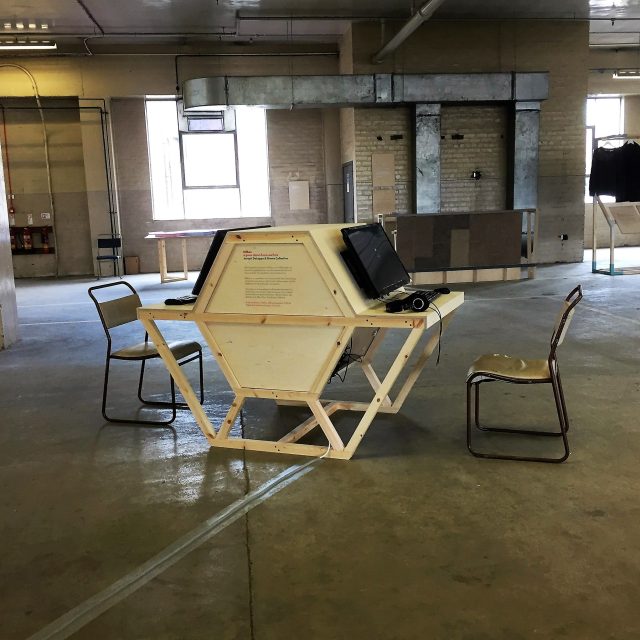

reader comments
170 with 84 posters participating
In 1983, President Reagan gave a speech about the role of computers in military preparation and recruiting that seems more relevant than ever nearly 40 years later.
In it, he noted the “incredible hand, eye, and brain coordination” many young people were developing by playing video games, and said the “Air Force believes these [game-playing] kids will be outstanding pilots should they fly our jets.” Reagan also pointed out that the “computerized radar screen in the cockpit is not unlike the computerized video screen,” and that if you “watch a 12-year-old take evasive action and score multiple hits while playing Space Invaders… you will appreciate the skills of tomorrow’s pilot.”
What Reagan didn’t know was that some of those kids-turned-pilots would grow up never needing to take evasive action. That is because they’d be flying deadly drone warplanes remotely over villages half a world away. “Right now you’re being prepared for tomorrow in many ways, and in ways that many of us who are older cannot fully comprehend,” Reagan said at the conclusion of his speech.
Today, the recent Pentagon drone strike that killed Qasem Soleimani and his entourage at a Baghdad airport is a timely reminder of the power of the push-button force that is dominating military warfare in the 21st century. And its use in military operations only seems likely to increase; as flying legend Chuck Yeager recently told Ars, “It’s a good thing any time you can effectively pursue the mission without a pilot bleeding or dying.”
As we learn more about the effects of drone warfare, on both the pilots and the civilians caught in the middle, it seems a good time to examine if the practice is indeed contributing to a “Playstation mentality to killing,” as former United Nations Special Reporter on Extrajudicial Executions Philip Alston warned of in 2010.
The use of video games as a platform for “high art” is as much in its infancy as the use of drones in warfare. And games are illuminating the horror of this new kind of warfare in a unique and modern way. Joseph Delappe’s Killbox (2015) and Palao Pedrici’s Unmanned (2012) both use the interactive format to give players a new appreciation of the issues surrounding drone warfare.
As the gaming industry continues to mature and grow alongside the technology of military drones, these two games give players a fresh perspective on the practice of unmanned killing: one by depicting a drone attack from both the view of the pilot and from the innocent villager on the ground; the other by presenting a portrait of a day-in-the-life of a military drone-pilot.
One day, we may look back on works like these as we currently look on historical meditations on war like Guernica (1937) or All Quiet on the Western Front (1929).
Facing your victim
“It is ongoing, it is growing, and it is horrifying.”
That is how digital media artist Joseph Delappe described the military use of drones. That growing “horror” also explains why he chose to focus his work on drone warfare, starting with the digital imagery of Cowardly Drones in 2013 and installation pieces like Drone Strike Visualization in 2014. Those works eventually culminated in an interactive game, Killbox, in 2015.
“It feels honestly as if what myself and other artists have really tried to caution against has basically all come true, and now it has become everyday and not even really reported that much,” Delappe told Ars Technica regarding drone warfare.
Delappe was riding a bicycle along the perimeter of Nellis and Creech Air Force Bases and Area 51 in 2012 when he was first inspired to turn his eye towards drone warfare. His bike was equipped to draw a chalk outline on that road as part of Project 929, a 420-mile trip which symbolically encircled the 100 square miles that scientists estimate are required for a solar farm that would meet the US’s energy demand.
During the 10-day ride, Delappe had ample time to think about what was going on inside his circle. Creech Air Force Base is where 900 drone pilots – and the physiologists, chaplains and psychologists that service them – go to work every day. It’s the largest staging and training base for drone warfare in the world.

At the time, President Obama was increasing the use of drone strikes, and Delappe thought his next project should focus upon how the actions of the base he was encircling were resonating thousands of miles away.
“I see drones as being cowardly weapons and really questionable, but they also fascinate me [as an example of] ‘the gamification of warfare.’” he said.
Delappe is known by some fellow game artists as the “Godfather” of using games for political activism. One of his first projects focused on the US military was the “interventionist” piece Dead in Iraq (2006-2011). For that project, Delappe entered the online multiplayer US Army recruiting game America’s Army as a soldier he named Dead-In-Iraq.
Delappe’s in-game goal was not to kill, but to be killed. After his character was shot down, Delappe would type the name, age, service branch, and the death date of one the 4,484 service members who had been killed in the Iraqi conflict into the game’s text-based public chat. The project garnered national attention, as well as harsh criticism from gamers.
He ended the project when the US officially announced the end of the conflict in 2011 (though US troops still remain in the country) and moved on to other work. One year after Project 929, he had the opportunity to start work on his first game. Working on sabbatical at the University of Abertay in Scotland, he teamed up with the Biome Collective, a crack team of digital media designers with a vision to make the first realistic version of a game about drone-warfare.
-
Two combatants engaged in deadly combat.
-
Killbox can be played at home and is available for free download from Delappe’s website.
-
The villager chases balls while they are targeted by the pilot.
-
The player is free to roam a bucolic scene based on a real farm-village in Pakistan where Democracy Now reported a grandmother and her children were killed in 2005 by an errant drone strike.
Delappe envisioned his game as a two-player asymmetrical first-person shooter, with one player controlling the drone pilot and the other taking a perspective rarely (if ever) seen in a game: that of the innocent villagers on the ground. The idea was to portray the term “collateral damage” in a gaming context.
“How do we depict that?” Delappe asked rhetorically in an interview with Ars Technica. “How do we make that meaningful and interesting? We didn’t want to make something fun. We wanted to make something that would draw people in and have a moment of revealing itself.”
He named the game Killbox, drawn from the term for a “temporary autonomous zone of slaughter” in Grégoire Chamayou’s book Drone Theory.


